Meldereiter
Joseph Robinson
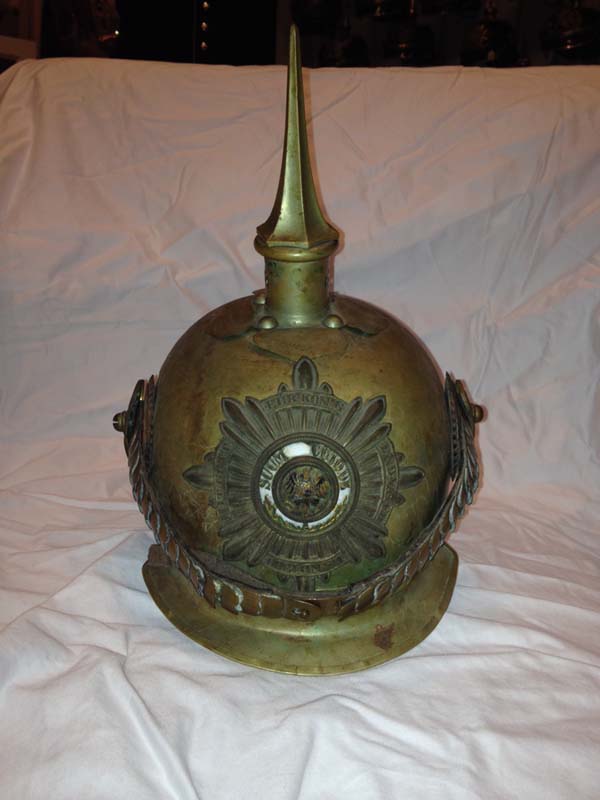
This article has its genesis in a helmet that came into the possession of Randy Trawnik. It came out of the estate sale in Arkansas and was sold on eBay. Glenn Jewison and Marshall Daut both shared information as we tried to determine what this helmet was. It is clearly not Jäger zu Pferde as the Wappen is clearly from a guard unit. It is an officers helmet and is extremely lightweight. The originality is not questioned. Prior to the formation of the Jäger zu Pferde regiments in 1905 there were several predecessors. So this started a search of the predecessors. As you will find this helmet did not fit cleanly into any hole.
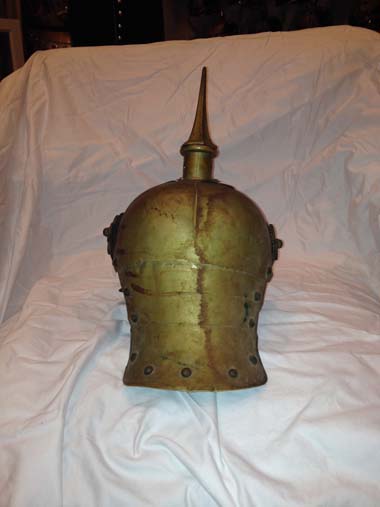
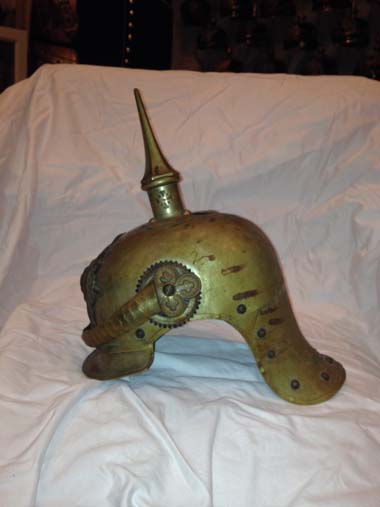
Before anybody jumps to the conclusion that this is a Kürassier helmet take a moment to consider the visors. Kürassier is round, Randy’s is square.
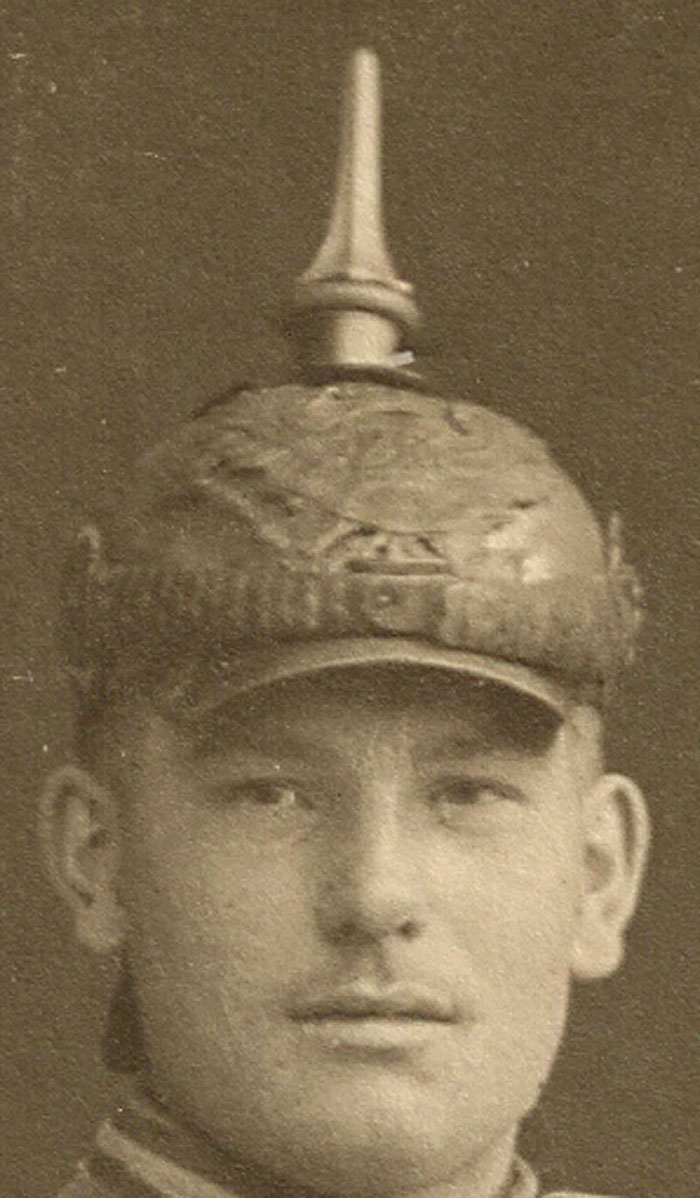
From an organizational standpoint there were 3 distinct time frames for the Meldereiter/ Jäger zu Pferde :1895-1899 Meldereiter Detachments–1899-1905 Jäger zu Pferde Squadrons -1905-1918 Jäger zu Pferde Regiments.
They were established by the AKO of 30 March 1895 an excerpt of which is shown below. You can see that in that establishment there were originally 4 officers per detachment. Therefore there should have been 4 officer helmets with a Garde star at some starting point.

As we are most interested in a helmet that came from the Garde we can track that organization directly. The Eskadron Garde-Jäger zu Pferde was formed originally as the Meldereiter-Detachement des Gardekorps on 1 October 1895. They were renamed as the Detachement Garde-Jäger zu Pferde on 31 March 1897 and as the Eskadron Garde-Jäger zu Pferde on 25 March 1899. On 1 October 1905 they became 3./Jäger zu Pferde Regiment Nr 2.
However, there is a problem with the timing of the uniform regulations. The uniform regulation for the officers was written in 1895 before the unit was established and changed in 1911 a long after the time we’re interested in. There is however an annex in the AVB detailing an AKO of 24 August 1897. An excerpt of which is shown below dealing with the helmet . As the original officers of the Meldereiter were not uniformed as such but wore the uniforms of their parent regiments, a Garde star could only have been worn between 1897 and 1905.
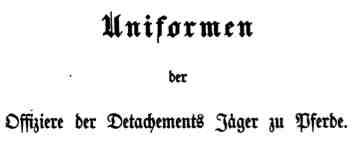
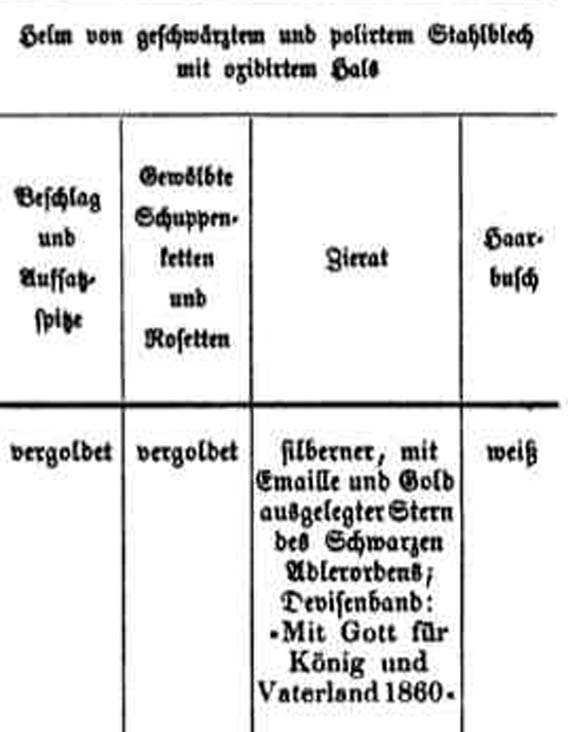
So according to the establishing regulation that helmet was blackened when it was a detachment in 1897. This is backed up by color painting of an officer identified by Glenn Jewison as Major Frhr. Thumb von Neuburg of the Eskadron Garde-Jäger zu Pferde. This picture is copied from page 23 of the book The Kaisers Army in Color by Charles Woolley. The painting is a reproduction of the work of Carl Becker. Made somewhere between 1890 and 1910 the illustration matches the regulation.
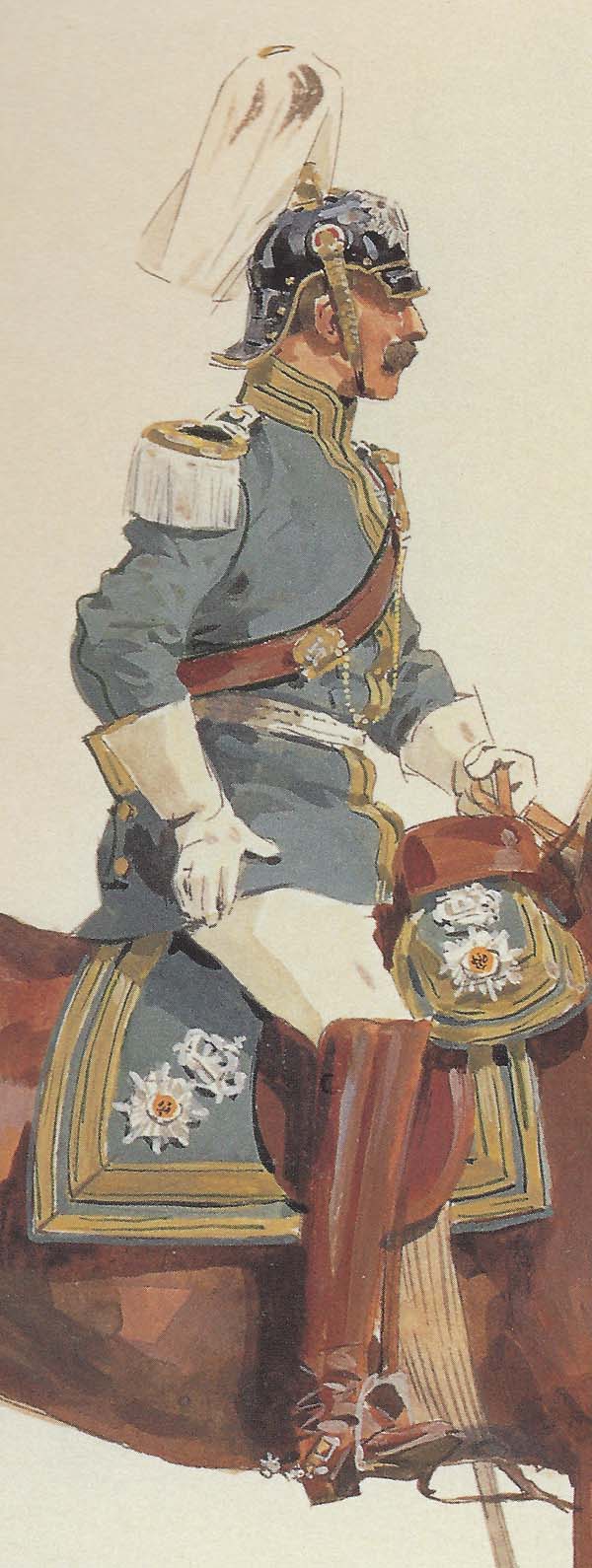
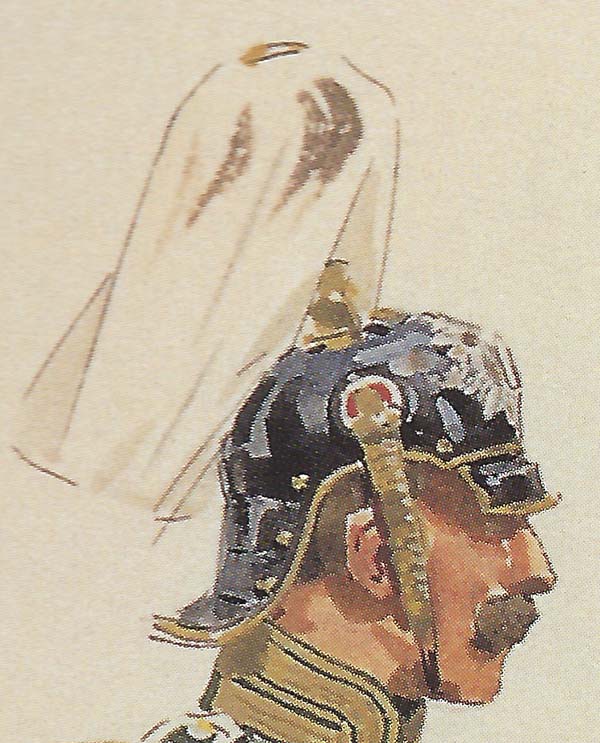
There are photographs of Major Frhr. Thumb von Neuburg found in the book “Unten den Fahnen der Alten Armee’ by Brackmann and Schmelzer. Especially the one on page 448 which is a blown up copy of the reservist picture on page 447. He is clearly wearing a blackened helmet. Not all of the pictures in that wonderful book are that clear some showing very very small reservists pictures of helmets that could be silver. Really tough to say but there are certainly a lot of pictures and no question about the Garde Star. You could actually buy a black helmet from a retailer as is shown by this excerpt of page 19 of the Neumann catalog.

Then there is this 1900 print by Knötel that also shows black helmets. As you can see from the establishment directive there were only 3 detachments originally in 1895. 4 are listed in the 1897 uniform regulatiion. This grew to 5 detachments by 1899 when the name changed to squadrons. Bavaria and Saxony also possessed Jäger zu Pferde squadrons until 1905, at which time they were assimilated into the 7th Chevauleger and 21st Uhlan regiments.
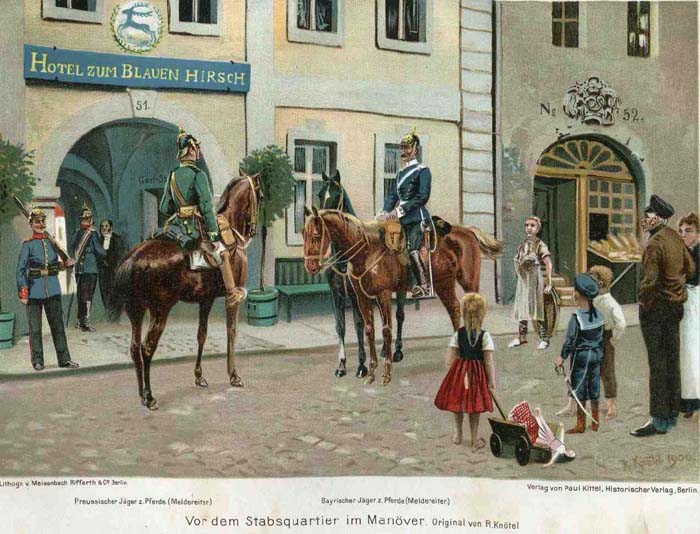
Senior ranked officers from Brigdekommandeurand higher in command of troops had a mounted staff orderly known as Stabsordonnanzen at their disposal. I know of no optical method to distinguish the helmets between them and the Meldereiter however, there were no officers uniformed as Stabsordannanzen.
Now where this helmet falls short in the explanation department is that it is all silver. Regardless of how the pictures might look in tint every single thing is silver. The chin scales, the spike, the spike base, the shell, the trim, the star. Everything. The star is original to the helmet and you can see the attachments in the pictures below. So what is it?
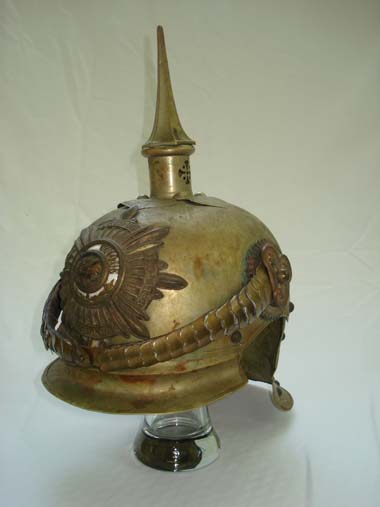
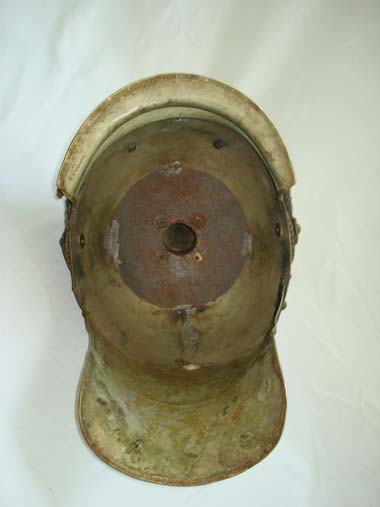
The regulation that formed this unit also formed the detachment for the I Army Corps. They also wore a blackened. helmet. Here is a picture of an enlisted man from that unit.. You can see what a blackened helmet looks like in a picture. Very clear.

Here is another picture from the same timeframe of a gentleman in the same unit. This one happens to be a one-year volunteer.

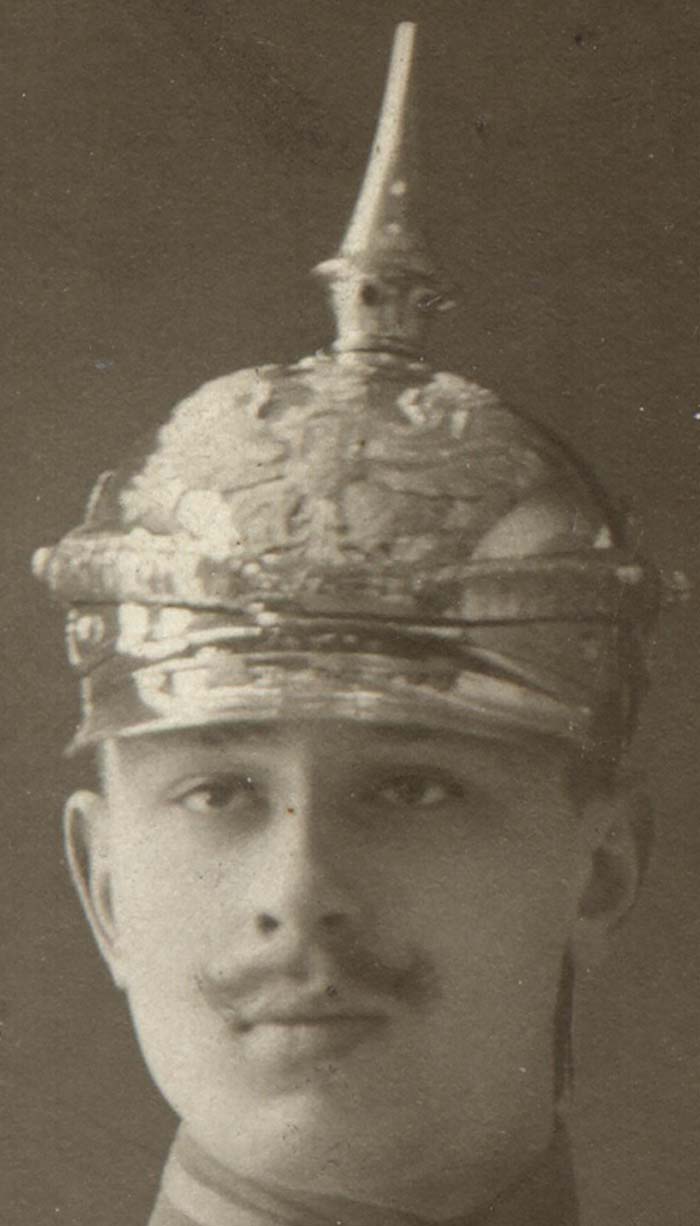
Now wait a minute this one is silver. Actually the Germans called it nickeled. So there are pictures with blackened helmets and pictures with nickel helmets. But the regulation seems very clear–black. So what is this?
A nickel helmet is shown clearly on page 480 in the book “Unten den Fahnen der Alten Armee’ by Brackmann and Schmelzer. Picture 559 has the caption: “the so-called Fähnrickshelm differ from those of the enlisted men in that it had two pronounced steps in the visor and through its nickel plated body.” If you compare the visors of the nickel picture with that of the black picture you can see the difference. All of the metal parts on this helmet in the picture are silver. It has an enlisted spike. Randy’s has an officer spike and Kleebatten. Picture 538 has a caption: “According to dress regulation, the helmet was supposed to be frosted black. However, often it was polished and nickel plated.”
The metal furniture was gold in some and silver in others. But the consistent reality is that black and the nickel helmets existed side-by-side despite the limitation of the regulation. In addition, there were huge timing issues. The easiest of which to see are the uniforms of the XV Army Corps. In the early years the Meldereiters of this Army Corps wore a distinctive Husar looking uniform. This was eliminated legally in 1897. So one would expect not to see this uniform far in the future. However there are at least 2 dated pictures in the book “Unten den Fahnen der Alten Armee’ by Brackmann and Schmelzer that show that uniform in use in 1902 and 1904. It seems as though for certain ceremonial reasons the old uniform would be trotted out. It is easy to extrapolate that the same thing could possibly be attributed to the Garde Corps.
It is not clear who could have these nickel helmets or when they could be worn. It seems to be either full dress parade–walking out uniform but definitely private purchase. Clearly officers had them as well as some other ranks. My best guess on Randy’s helmet is that it is one of these nickel plated helmets from the Garde Corps. Set up for a full officer and probably dated before 1905. There seems to be a lack of direct photographic evidence for that specific Army Corps. However, by using photographs of other Army Corps there is no reason to believe that these did not exist in the Garde. In fact there is solid proof. Below is an excerpt from page 20 of the Neumann catalog. If you look at item 247 you can see this retailer offered renovation of Randy’s type helmet with a nickel body.


